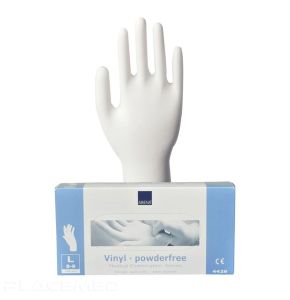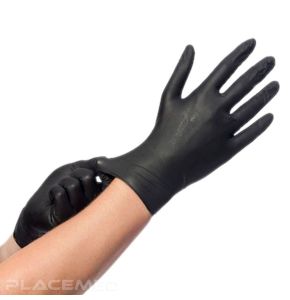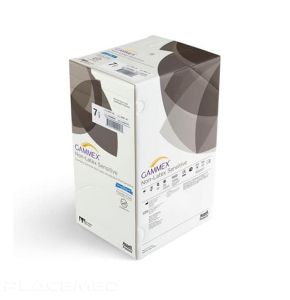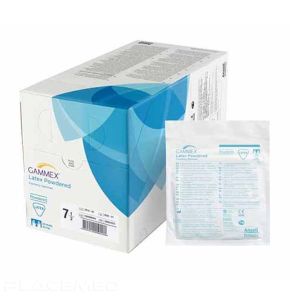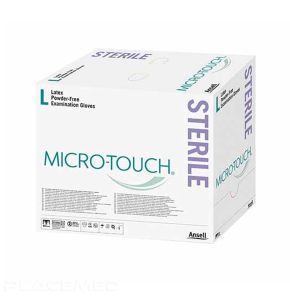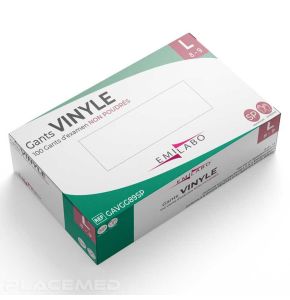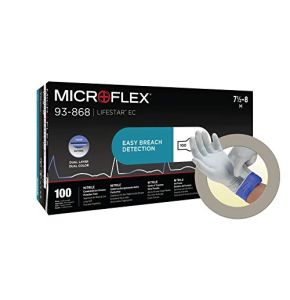Examination glove
8437017506379 18/11/2024 299
8437014559491 18/11/2024 289
18/11/2024 327
35414566070555 18/11/2024 551
18/11/2024 221
18/11/2024 260
18/11/2024 317
18/11/2024 294
Medical Gloves for Safe and Hygienic Practices
In the medical field, gloves are essential to ensure the safety of both patients and healthcare professionals. Examination gloves provide an effective barrier against pathogens, protecting against infections. By wearing medical gloves, caregivers prevent cross-contamination during medical procedures, ensuring optimal hygiene.
Types of Examination Gloves
There are several types of medical gloves designed for different situations. Latex gloves are widely used for their elasticity and tactile sensitivity, allowing precise movements. However, some people are allergic to latex. To avoid this risk, nitrile gloves, made from synthetic rubber, are an excellent alternative. They offer high resistance to chemicals and punctures. Vinyl gloves, on the other hand, are economical and suitable for short-term procedures. The choice of gloves depends on the specific needs of each medical practice.
Medical gloves can be powdered or powder-free. Powdered gloves are easier to put on thanks to the cornstarch powder they contain. However, this powder can cause irritation or allergic reactions. Powder-free gloves are preferred to reduce these risks and are now more commonly used in medical settings.
Depending on the procedure, it is important to choose between sterile and non-sterile gloves. Sterile gloves are used for surgical interventions or procedures requiring complete asepsis. Non-sterile gloves are suitable for routine exams or basic care. Disposable medical gloves are often non-sterile but provide sufficient protection for many tasks.
How to Choose the Right Medical Gloves
The choice of examination gloves depends on several criteria. Tactile sensitivity is crucial for performing precise movements, especially in fields like surgery or nursing. Latex gloves offer excellent sensitivity, but for those allergic to latex, nitrile gloves are a good alternative. They are made from synthetic rubber and provide similar physical properties to latex.
Puncture and chemical resistance are also important. Nitrile gloves are known for their strength and protection against chemical substances. For less demanding procedures, vinyl gloves may suffice, although they are less resistant.
Finally, it is essential to consider allergy risks. People allergic to latex should avoid latex gloves and opt for hypoallergenic gloves such as nitrile or vinyl gloves. The choice of gloves should be tailored to the professional's sensitivity and the patient's needs.
Standards and Regulations for Medical Gloves
Medical gloves are subject to strict standards to ensure their effectiveness and user safety. EN 455 defines the requirements for disposable medical gloves. It covers aspects such as leak detection, physical properties, biocompatibility, and shelf life. Gloves must also bear the CE marking, indicating compliance with legal safety requirements in the European Union.
Best Practices for Using Examination Gloves
To ensure optimal protection, it is important to know how to put on and remove medical gloves without contamination risks. Before wearing gloves, hands should be thoroughly washed. When removing gloves, avoid touching the outer surface to prevent contaminating the hands. Gloves should be changed between each patient and for each procedure to prevent cross-contamination.
Hand hygiene is crucial even when using gloves. It is recommended to disinfect hands before putting on gloves and after removing them. Disposable gloves do not replace hand washing but complement hygiene measures.
Waste Management and Environmental Impact
Disposable medical gloves must be properly disposed of to prevent the spread of infections. They should be discarded in specific containers for medical waste. Healthcare facilities must comply with regulations for managing medical waste.
The environmental impact of disposable gloves is a growing concern. To reduce ecological footprints, more eco-friendly options are being developed, such as biodegradable gloves or gloves made from recycled materials. Choosing eco-friendly gloves helps protect the environment without compromising safety.
Innovations in Medical Gloves
Manufacturers are innovating to improve the comfort and durability of medical gloves. Gloves with internal moisturizing coatings are now available. These coatings help maintain skin hydration, reducing irritation or dryness caused by prolonged glove use.
Furthermore, new biodegradable materials are being developed for manufacturing medical gloves. These materials reduce environmental impact while providing the same levels of protection and comfort. The use of plant-based synthetic rubber or biodegradable polymers is being explored for more eco-friendly gloves.
In conclusion, medical gloves are essential for ensuring safety and hygiene in medical practice. A variety of disposable medical gloves are available to meet different needs, whether in terms of materials, resistance, or comfort. Choosing gloves requires careful consideration of applicable standards and allergy risks. On our Placemed marketplace, you will find a wide selection of examination gloves to meet your professional requirements while contributing to responsible and environmentally friendly medical practice.
 Francais
Francais 
